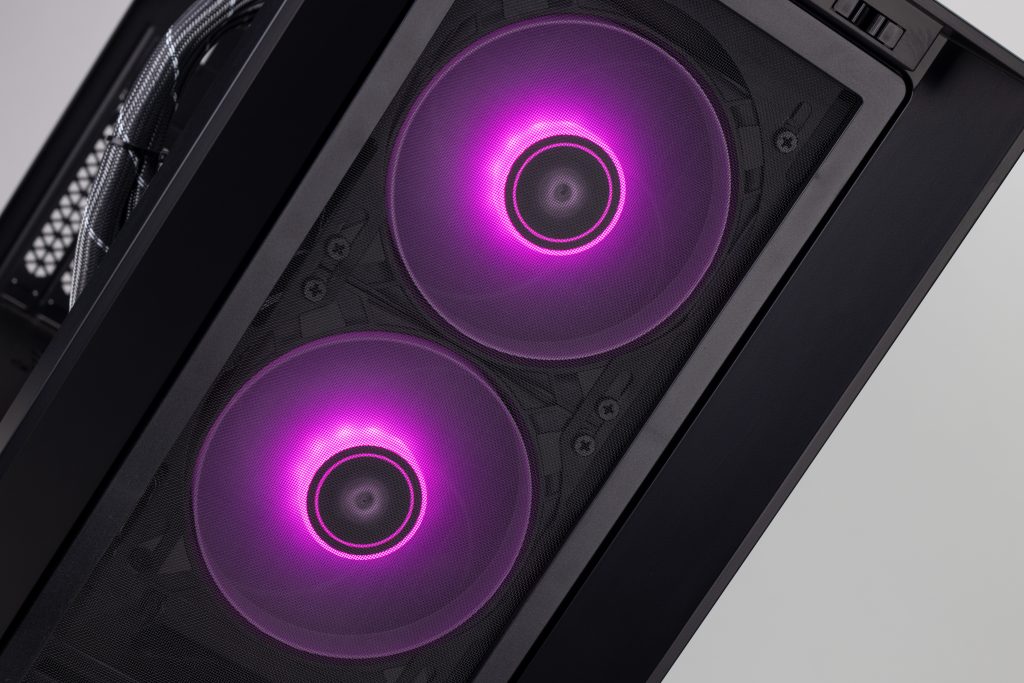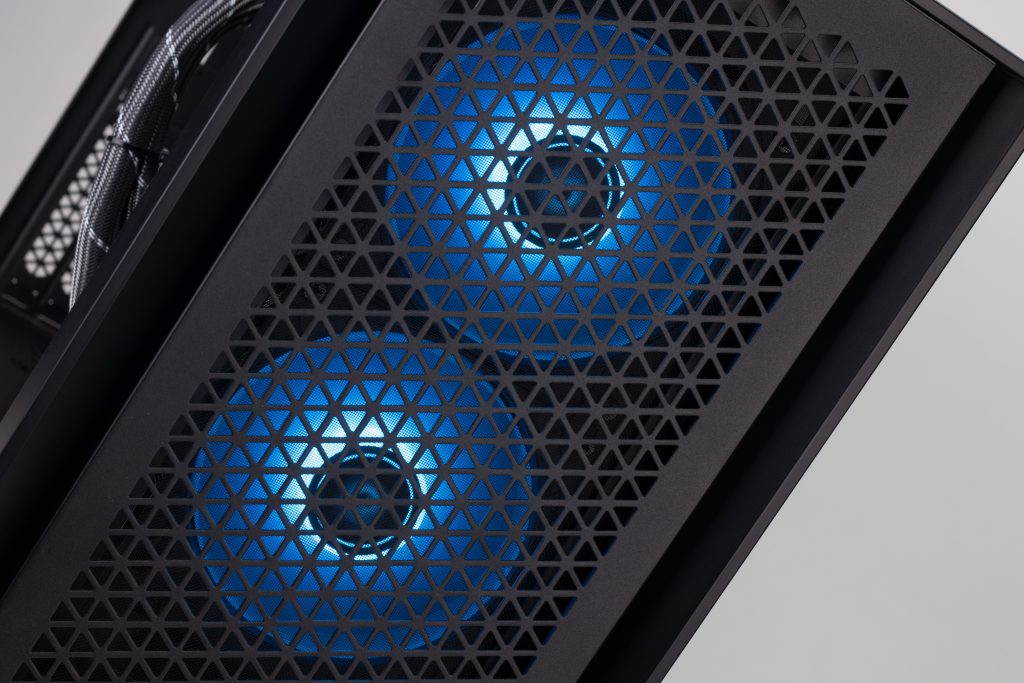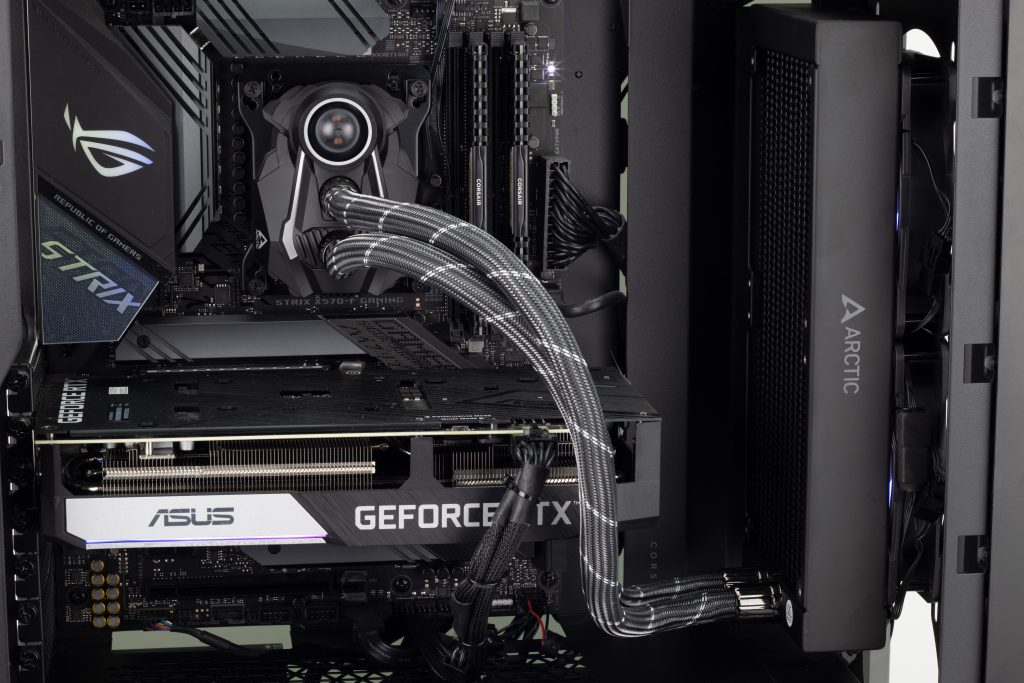
TL:DR - Pros and Cons
- Arctic developed pump - which differs it from "generic" Asetek alternatives
- Incredible cooling capability
- Arctic 6 year warranty
- Pre-managed fans & cables
- Active VRM cooling
- No proprietary software
- Included RGB hub
- All modern socket mounting supported
- Ugly block design
- Thicker than normal radiator (38mm) - keep compatibility in mind
- Cumbersome CPU block mounting
- Thick tubes that are hard to manoeuvre
Initial Reactions
Going into this cooler review somewhat blind other than knowing it's more subtle cousins cooling potential, I was very optimistic about it's capabilities. However upon opening the box I was taken a back by the girth of this thing. It is not unusual to see thicker than normal radiators in PCs, but I wasn't aware the radiator for the Arctic Freezer is 38mm thick, around 10mm thicker than other more "conventional" 240mm coolers on the market.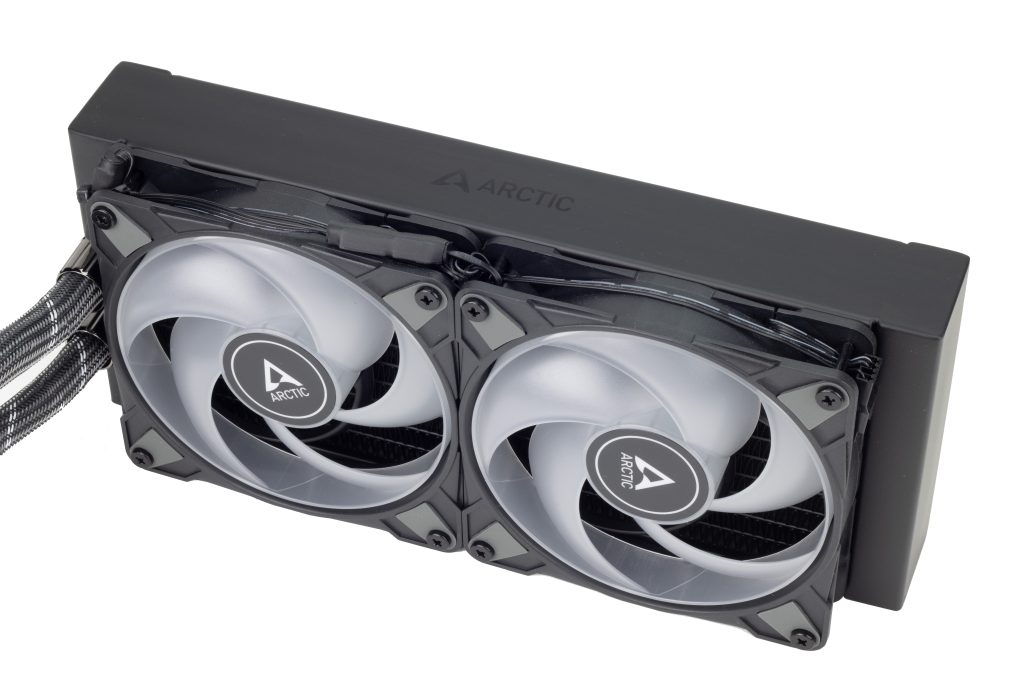
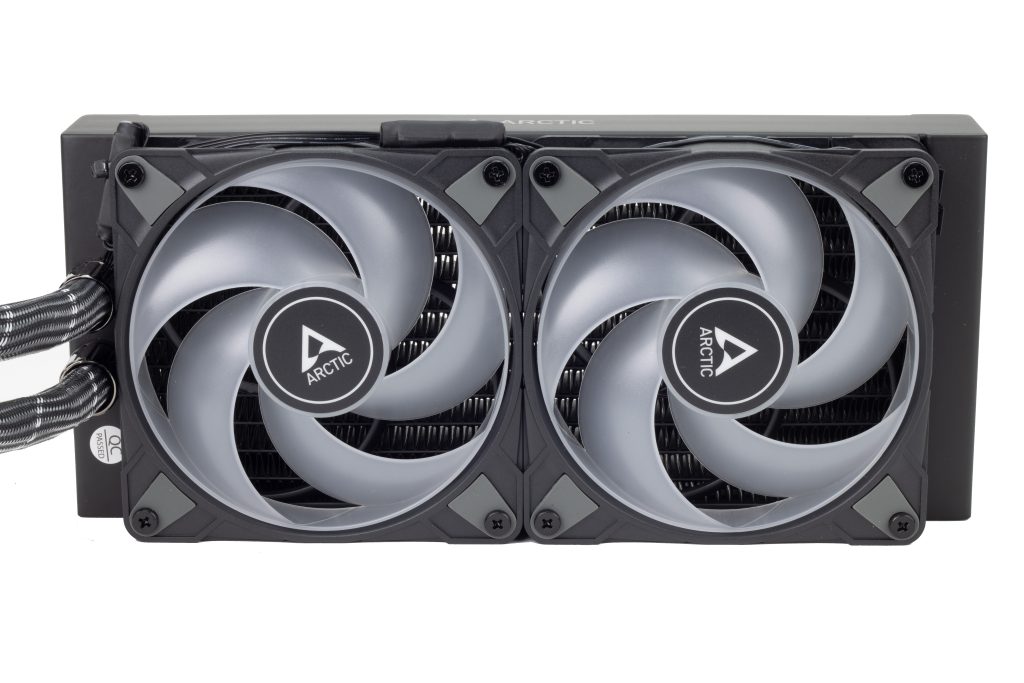
Liquid Freezer II 240 RGB Technical Details
Below is a breakdown of technical details and specifications for the Arctic Liquid Freezer II RGB including some dimensions and what is included in the box.
- Radiator Size - 240mm
- Radiator Dimensions (WxDxH) - 120 x 38 x 227 mm
- Radiator Material - Aluminium
- Cold Plate Material - Copper
- Total Weight Including Fans - 1191g
- TDP - Not Listed
- Radiator Fans Speed - 1800RPM
- VRM Fan Speed - 3000RPM
- Fan Lighting Connectivity - 12v 4-pin RGB connector
- Socket Compatibility Intel - 1700, 1200, 115X, 2011-3*, 2066* *Square ILM
- Socket Compatibility AMD - AM5, AM4
- Arctic Liquid Freezer II RGB cooler
- x2 Arctic RGB P-Fans
- Arctic mounting for listed sockets including LGA1700
- Fan and lighting controller
- MX-5 thermal paste (0.8g)
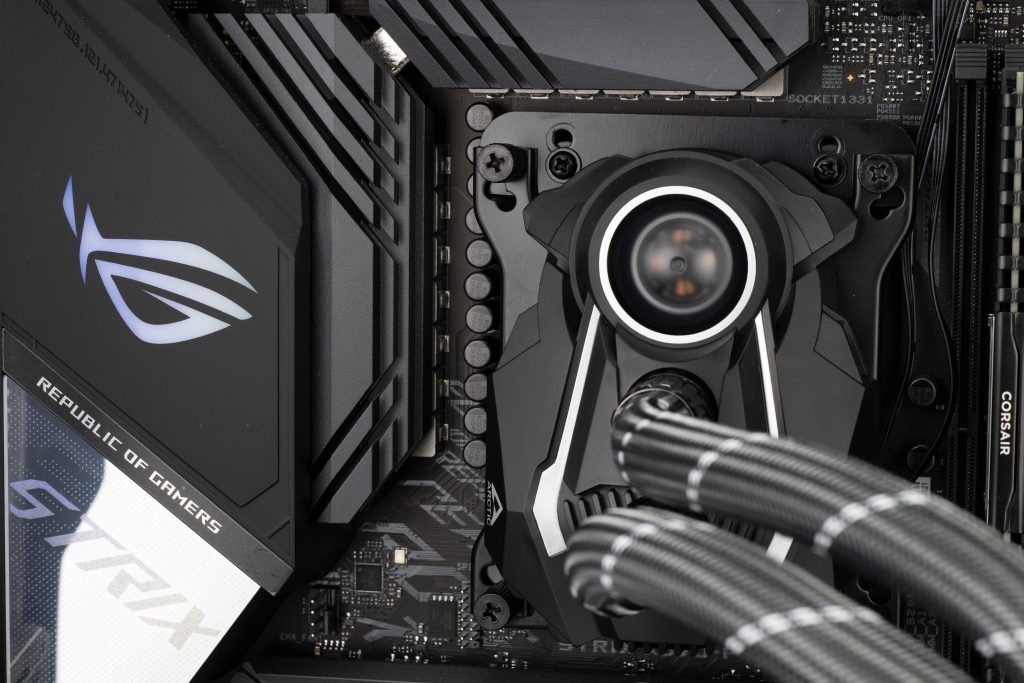
Testing Specification
For thermal testing we use a range of different software to stress the CPU including 3DMark Time Spy CPU Test, Cinebench R23, Prime 95 Blend and Aida64 utilising AVX based tests. Temperature's are recorded using Aida64's temperature logging.
Fan or pump speed (RPM) is not manually set or throttled for sound testing, including the VRM fan with the Arctic cooler in this instance. The noise testing is set to mimic the end user experience for what can be expected under general use when following each cooler's manual or set up guide. Whilst this isn't a definitive test or comparison to the quality of each fan that comes with an AIO, it's closer to the conditions you may experience.Room ambient temperature is monitored and recorded before, during and after our testing and a Delta is calculated for the temperature over the recorded ambient room temperature which is used in all of our temperature charts. The CPU performance-core clock is locked 4.0 GHz and CPU core voltage is locked to 1.33v
- CPU - AMD Ryzen 7 5700X
- Motherboard - ROG STRIX X570-F
- RAM - 16GB Corsair Vengeance LPX 3000 MHz (2 x 8GB)
- SSD - Samsung 1TB 980 Pro
- PSU - Corsair RM850x 850W
- GPU - Nvidia RTX 3060 Ti
- Case - Corsair 4000D Airflow
Performance & Temperature
I'm sure the performance is what you'd expect with a radiator 10mm thicker than most of it's counterparts. The interesting stuff here from our perspective is the work that little VRM fan is doing to shift the stagnant, warm air from around that part of the motherboard. So let's look at that first.VRM Surface Temperature
What is VRM surface temperature? VRM stands for Voltage Regulator Module which is used by modern CPUs/GPUs to control and alter the voltage sent to the aforementioned components. These modules are usually located around the perimeter of a CPU socket and can generate a lot of heat. Depending on your configuration this area of the motherboard can pool hot air, so this small test aims to check what the temperature of the surface of these VRM modules, and if any solutions to moving that air are working. As always our chassis configuration doesn't have any extra fans other than those at the front, for the cooler itself. This is to let any features such as a VRM fan located on the CPU block to showcase what it can do without interference. For newer motherboards that have insane power delivery and regular processors smashing the 200W barrier, every degree counts. So a small fan to shift some of it into your ever warming bedroom or office is a nice addition.VRM Surface Temperature Idle
26.9
VRM Surface Temperature Under Load
37.6
Benchmarking Temperatures
This graph contains the results from our 3 CPU benchmarks. The temperatures listed is the delta over ambient temperature which was monitored for each benchmark. You can find a graph with results from all of our recent cooler tests at the bottom of this review. These results shatter the previous coolers we have tested. It must be remembered we do not normalise certain aspects of cooler testing to give a more user oriented experience, but it isn't a surprise this cooler does so well. With a much larger surface area, a pump designed in house by Arctic, fans more oriented towards static pressure and better out of the box thermal paste, we wouldn't expect any less.Compatibility & Ease of Use
The Arctic Freezer II has a mark down on compatibility due to the extra thickness of it's radiator. This will especially effect clearance to tall memory in some instances, and fitting the AIO into small form factor PCs. We didn't have an issue putting it in the front of our Corsair 4000D Airflow, however, with newer graphics card getting increasingly long. Some chassis barely manage to fit 28mm radiators and fans at the front, so a 38mm one could be a no go if you're unable to install it in the top of your case.
The tube quality on this cooler is great, but their thickness could lead to problems. This cooler is definitely a power user item built into a 240mm package, so if you're tight for space and thinking about tube management, perhaps look elsewhere.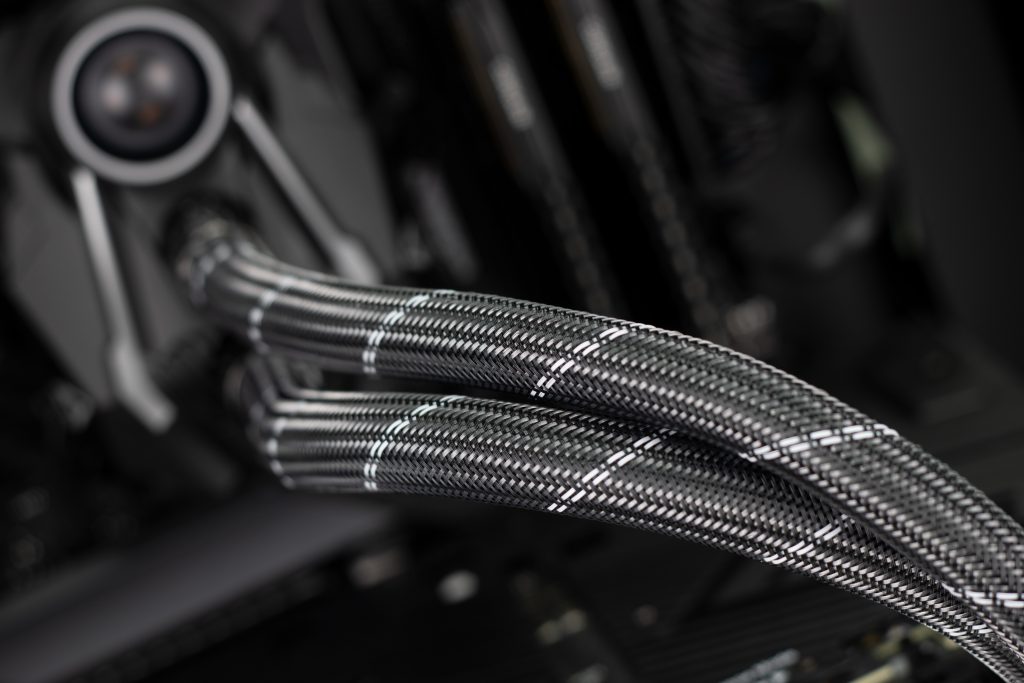
What about connectors?
The cooler doesn't use any proprietary connections other than a small 4-pin on the included RGB hub, however that is only to connect it to the hub itself, and then goes to a regular 4-pin PWM fan header. This is always a positive sign when it comes to ease of use and compatibility. In fact, due to the majority of the AIO being pre-cable managed, you only need to plug in one 4-pin PWM fan header, and one 4-pin 12v RGB header providing your motherboard supports it. The Hub is there if required and a very welcome option. We went with the pre-configured option of just two standard headers, which covers your pump, VRM fan, and radiator fans.
CPU Socket Mounting
Our testing platform uses the AM4 socket. I can only describe the mounting for this cooler as cumbersome. The cooler uses the original AMD backplate (which is great for AM5 compatibility by the way!) but has spacers and some extra brackets to get it to the right height.
I feel the installation process would benefit with this system being revised, perhaps into one solid piece instead of splitting it across two. Once the CPU block was installed however it is very solid. Utilising all 4 mounting points instead of a clamp style found on a lot of AM4/AM4 coolers is a plus here.Aesthetics
It goes without saying that the Arctic Freezer II CPU block design is disliked by most, it's function over form. Aesthetics is always a matter of opinion but I would genuinely consider other options if it was on display in my case. Statistics and temperature aside it is certainly at the bottom of the pile on looks here.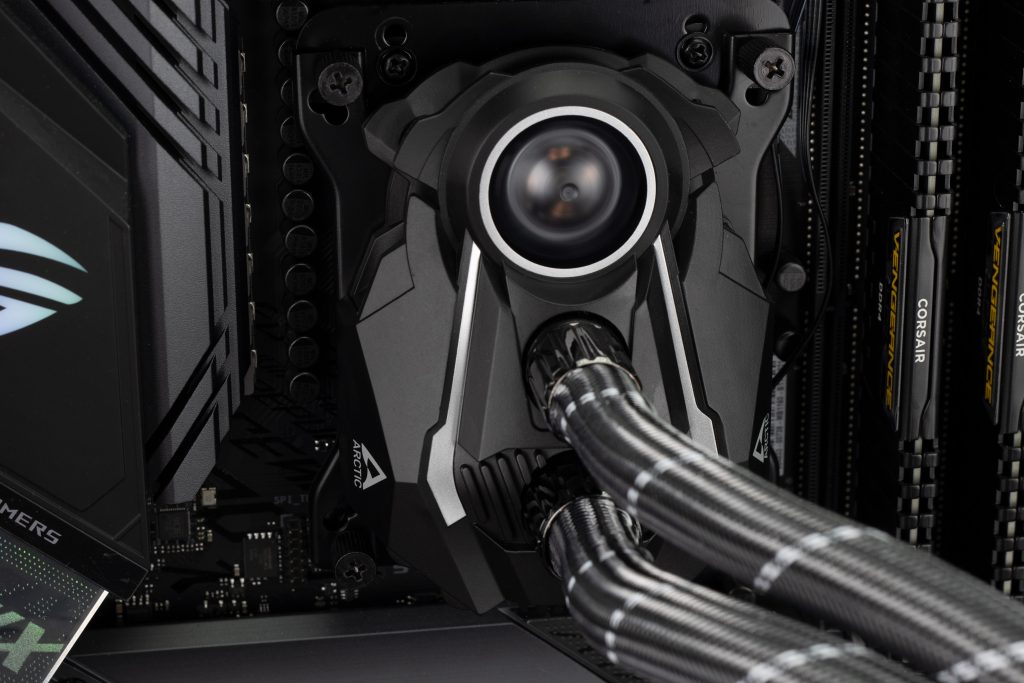
Acoustics
With our testing being user orientated we do not normalise any variants when it comes to acoustics. We know we know... This isn't the scientific approach, but we hope to give a better indication of what you might experience should you purchase this cooler.
The sound fairs well against other coolers we've tried, except for the internal sound. This is to be expected with a small, fast VRM fan shifting that warm air away. The best way I could describe this fan is a small electrical hum whilst gaming. If you're wearing a headset I couldn't imagine you'd notice it. A decibel (dB) reading is taken from 200mm away from the fans (intake) with no obstruction when idle and when under load, as well as *200mm from behind the radiator. *Approximated inside system, not always possible to get 200mm exactly.All readings were taken using a professional sound level meter in a quiet room.
200mm in front of radiator fans (Idle) - 31.3 dB
200mm behind radiator (Idle) - 34.7 dB
Usability & Software
As previously mentioned this cooler doesn't come with any silly software in order to make it work. We used ASUS Armory Crate which has Aura included to change the mode and speed of our coolers lighting. Whilst Arctic do make an A-RGB variant for this cooler, we have the RGB one, so specifically to this cooler you won't be able to go crazy on the lighting as it'll be locked to a single colour as tall times. Wondering what the difference is? Check out our article on the differences between RGB and ARGB here.